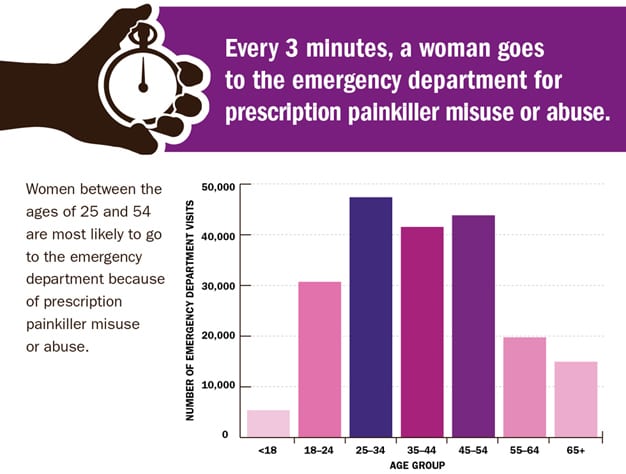Spike in Prescription Drug Addictions Among Women
A new analysis of federal data finds that pain pill addiction is now a woman’s problem that has spiked 400 percent in recent years.
It used to be that more men were addicted to pain pills, men who did backbreaking physical labor, but since 1999 there has been a turnaround. Now more women are dying of overdoses from OxyContin than from homicide or cervical cancer, reports the New York Times and the victims are older and white. High doses can also cause sleep apnea, lethargy and psychological dependence.
The analysis on pain pill addictions and deaths was done by the Centers for Disease Control and Prevention (CDC).
Why women? With more women as primary breadwinners, pain medication can reduce anxiety created by all of those responsibilities and make users feel strong and productive and pretty. Often these women live in rural America. Among African-Americans, the death rate from prescription meds was less than half that of whites.
Crystal Steele, profiled in the Times article, said while working at a call center for a funeral home, she heard of 50 drug-related of deaths of women. She too would have been among them, she feels, had she not been jailed for stealing pain meds.
The CDC reports about 6,631 women died from the overdose of pills in 2010, among them OxyContin, Percocet and Vicodin. Between the years of 1999 to 2010, a total of 48,000 women died from prescription painkillers. For every death there are 30 women who end up in the emergency room over painkiller misuse.
Addicts ranged in age from women in their 20s and 30s to 45 to 54, which was the group with the highest death rate. Many of the women live at or below the poverty line or come from families that have dealt with addictions and depression.
Many of the women were legitimately prescribed pain medications at some time in their life, which began their addiction. Women are also more likely to suffer from fibromyalgia and have a smaller body mass, explaining the prescriptions and overdoses.
This trend is costing us all. Emergency room visits, law enforcement crackdowns, the rising costs for insurers and addiction treatment programs add to the burden on society and the cost of our healthcare system.
Share This



